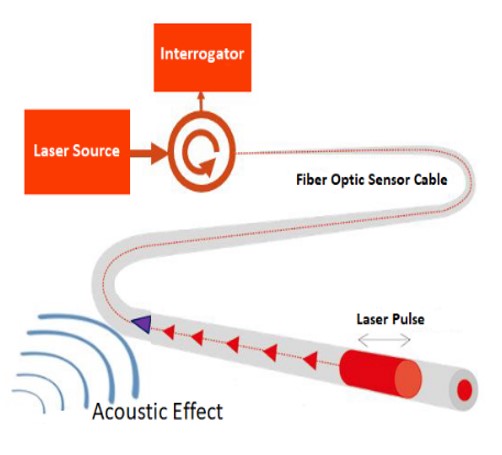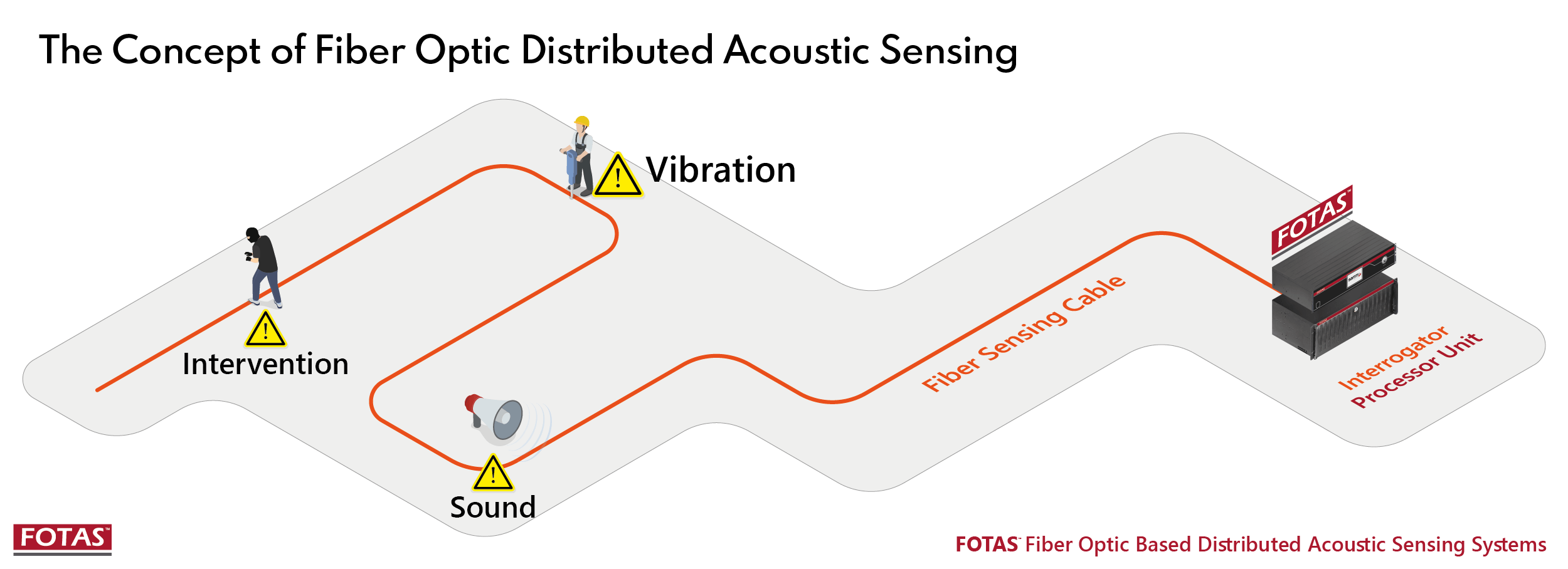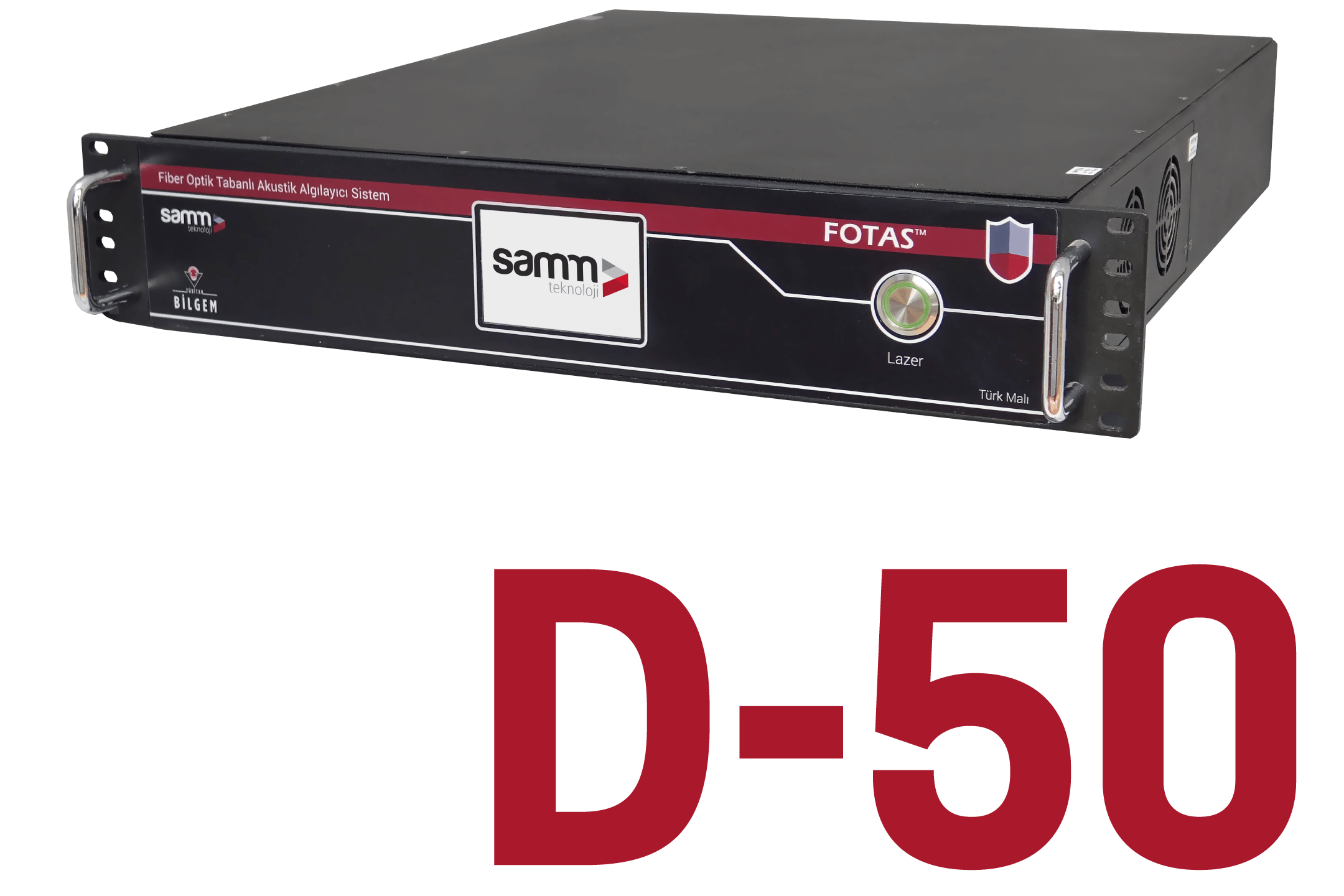Role of Fiber Optics in DAS Technology
FOTAS utilizes fiber optic cables for Distributed Acoustic Sensing. Most DAS systems employ fiber optic cables. Light waves propagate into the fiber optic cable, being affected by acoustic waves. These affected light signals can be detected by devices such as Optical Time Domain Reflectometry (OTDR) units. The high sensitivity of fiber optic cables makes DAS systems indispensable in many industries. Unlike traditional sensors that measure at determined fixed points, the fiber cable itself is used as a sensor in the DAS system, effectively turning the entire fiber cable into a network of microphones. This feature allows the system to collect detailed data at every point, enabling more efficient monitoring of large areas.
DAS Application Areas
DAS finds application across various linear assets such as pipelines, roads, railway tracks, borders, and fences. Employing tailored algorithms, it enables the monitoring, tracking, and detection of diverse activities and events along these assets, including vehicle and human traffic, excavation, or tunneling. Moreover, it serves as a valuable tool for asset condition monitoring, facilitating the detection of incidents like pipeline leaks or damaged rails, among others. Fiber optic distributed acoustic sensing serves various applications including seismic sensing, border and perimeter security, pipeline integrity monitoring, and safety assurance in industrial, mining, hydropower, and transportation infrastructure. Additionally, fiber cables can detect temperature changes, although this function is distinct from acoustic sensing.









